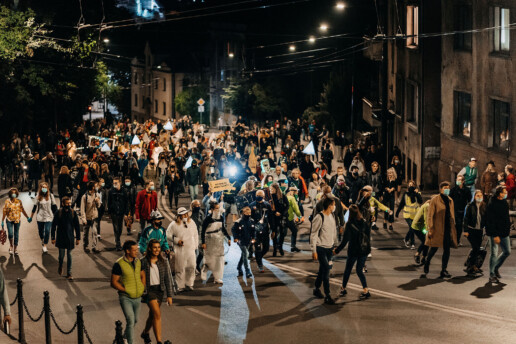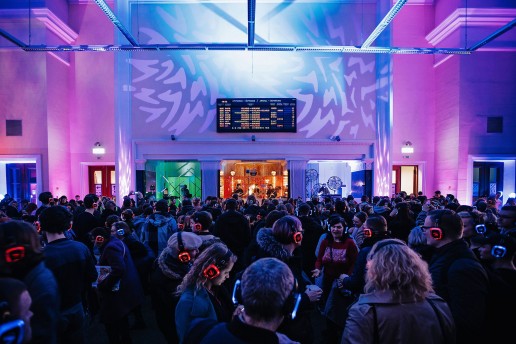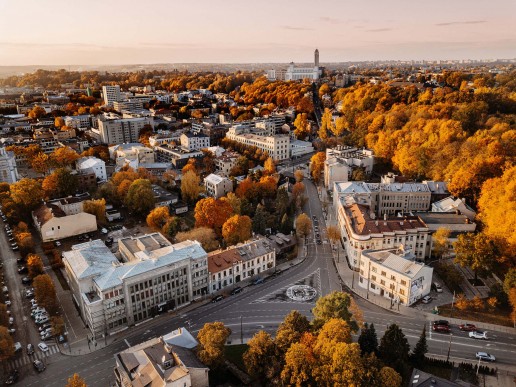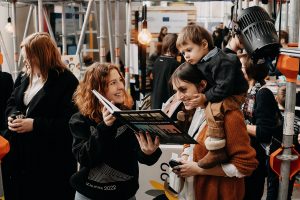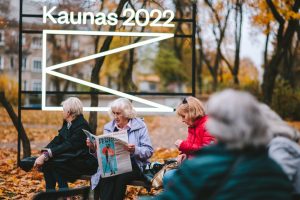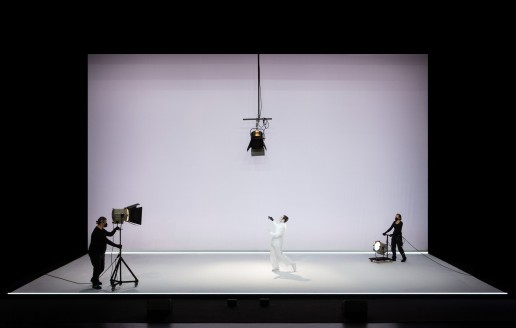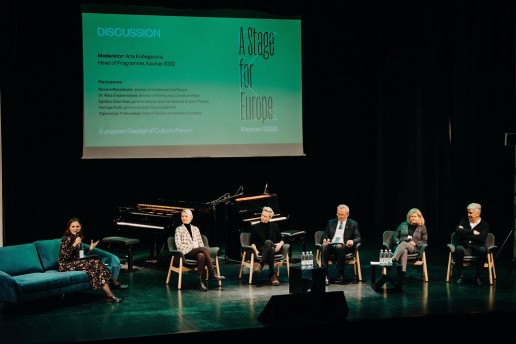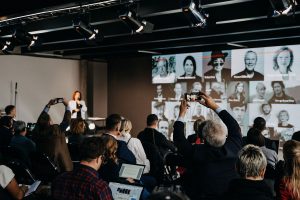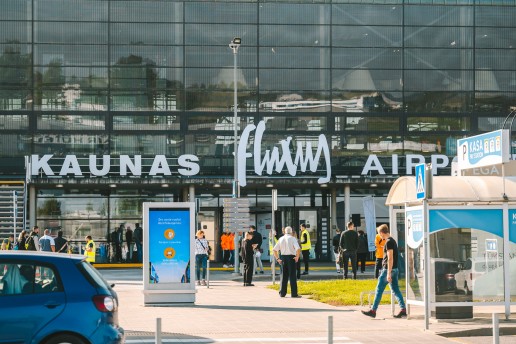Inspired Communities: the Strength and Success of Kaunas – European Capital of Culture 2022
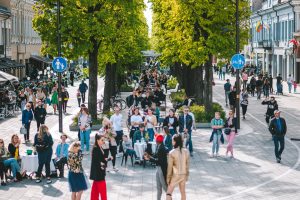
How does one measure the success of a project as ambitious as the European Capital of Culture? Is it the astonished foreign guests and the participating artists praising each other? In a way. However, the real achievement and strength are the local communities that got closer and became more inspired during the process. This is why creativity as part of everyday life is included in the core formula of Kaunas – European Capital of Culture 2022.
Five Years Together
‘We the People’, often called ‘Fluxus Labas!’, is one of the broadest of the Kaunas 2022 programmes, and over five incredibly intensive years of day-to-day activities, it has had an impact on the majority of communities in Kaunas, promoting the idea that residents themselves are capable of addressing challenges and making change.
‘The basis for our programme’s success rests on shared human and European values: the openness of people and communities toward one another, and to diversity, innovation, and creative solutions; inclusion of different people and organizations; building and maintaining interpersonal relationships; and promoting dialogue and co-creation,’ Greta Klimavičiūtė-Minkštimienė, the curator of the communities programme, believes.
The curator stresses the rest of the unique features of the communities programme, including its experimental spirit, sense of adventure, and playfulness: ‘By embracing these principles, we symbolically follow in the footsteps of George Maciunas – the founder of the Fluxus movement and a Kaunas native – and his ability to see the world and its challenges differently – more playfully and more simply, from a more human perspective.’
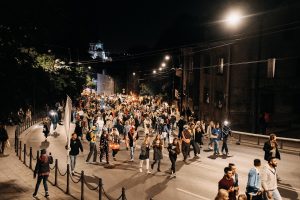
More and More Happy Courtyards
The courtyard project has become the pride of Kaunas 2022. Many have copied one of the most successful pandemic-era projects created in the European Union, presented at international awards ceremonies.
Since 2019, ‘Fluxus Labas!’ has been encouraging residents to engage with their neighbours to change their surroundings, take responsibility for them, and find creative solutions to the challenges they face. During Lithuania’s first quarantine in 2020, ‘Fluxus Labas! Kiemas’ adapted to the changing situation and launched the Culture to the Courtyards project. Different performers presented shows to residents in surrounding apartment buildings, allowing audiences to enjoy culture safely in their yards, from their windows and balconies.
In 2022, the program will invite one and all to as many as 80 courtyards in 11 elderships in Kaunas to enjoy the gift of shows by theatre, dance, contemporary circus, music, and other performers.
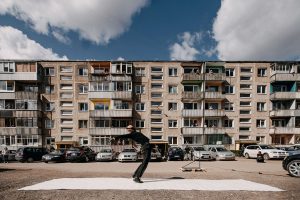
Laboratories Producing Happiness
The Fluxus Laboratories is a particular branch of the ‘Fluxus Labas!’ project that trains community facilitators. These people have now spread out through the city. Their goal is to bring together formal and informal communities, city residents, and organizations in different sectors and encourage them to become involved in community cultural and artistic activities and promote such activities themselves in specific neighbourhoods.
In 2022, the Fluxus Laboratories will ‘explode”’ and present unique community cultural and artistic projects in many different neighbourhoods throughout Kaunas. As early as April 23, the Šilainiai Urban Eco Festival, the only one in Lithuania, will unite residents and various organizations. The festival promises to impress with Šilainai natural and landscape design installations, lectures, and educational programmes.
On June 10–12, the community of Draugystės (Friendship) Street in the industrial part of Kaunas will present an interactive cultural and local creative game called The Art of Friendship. Visitors will be invited to enter sites that have been previously off-limits, learn more about welcoming residents and workers and their co-creations, and participate in playful and artistic activities.
On June 11, one will have the chance to walk through Eiguliai in a way they have never had before. Collaborating with different street artists, the community has created drawings that reflect its identity and now invites you to explore them on this colourful and musical walking tour.
On June 18, the Dainava neighbourhood community, collaborating with professional performers, artistic groups, and volunteers, will invite everyone to a midsummer mystery in Draugystės (Friendship) Park.
The real Midsummer will be celebrated in the impressive Šančiai Festival. Initiatives promoted in Šančiai over the past four years will all come together at this three-day event.
One will be able to visit a former gunpowder warehouse, ‘Parakas’, and celebrate what Lithuanians call Joninės by immersing into a surprising opera of imagery and watching a performance of ice and fire. Moreover, artists and residents will revive the old Šančiai barracks from their deep sleep and invite everyone to creative workshops, musical performances, and tours.
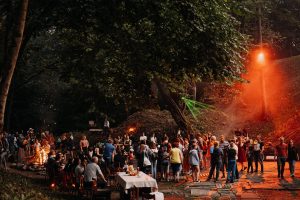
‘Just Come’, a poetry festival by the Gričiupis community, will take place in Kovo 11-osios (March 11) Park on July 23 and will also feature a ceramics collection of more than 700 works of art crafted by members of the community as they listened to poetry.
On July 9, the festival ‘Forest of the Senses’ will take place in the Panemunė pine grove and will join professional artists, naturalists, and herbalists to create land art and sound installations.
Courtyard Gallery (Kiemo galerija), a new legend of old Kaunas, will invite people to experience colourful creations as well as the retelling of local stories in central Kaunas and its Old Town courtyards on July 16.
On August 6, the community of Žaliakalnis will host a dancing tour, ‘Step by Step’, that will directly involve professional artists, residents, and visitors to Kaunas, calling them to learn more about the living memory and history of Žaliakalnis and its local mythical creature – Kaukas.
August will also be a perfect time to meet by the Kaunas Reservoir, colloquially called the Kaunas Lagoon. The community of Petrašiūnai will host the celebration on August 14 to emphasize the vital role the lagoon plays as part of the face of Kaunas and reveal the whole range of activities that take place around this body of water.
On August 20, it will be time to discover the Vilijampolė eldership. The artists’ collective God’s Entertainment (Austria) performance will open the ‘Under the Carpet’ installation. One of the show’s elements will be weaving a carpet by the people of Kaunas themselves. On the same day, Culturethon, a festival of sport and art, will travel from lake Lampėdis to the banks of river Neris.
A private music school located in Šilainiai, Jazz Academy, and composer Hara Alonso are of an experimental composition project titled ‘The City Composing in Kaunas’, a work of music created with the people of Kaunas. Its results will be presented on September 10 at the Ninth Fort.
In Aleksotas, audiences will be invited to view an installation assembled from residents’ stories on September 10. The arts group Effetto Larsen (Italy) will create an emotional map of the area based on the memories of those who live here and the experiences of specific places in the neighbourhood. The final result will be an installation modelled as an emotional, interactive journey through the Aleksotas neighbourhood. On September 18, the community of Aleksotas will host the ‘Flying Through Time’ interdisciplinary festival. Different spaces throughout Aleksotas will become stages for theatrical, musical, and other types of performances.
The Šančiai Cultural Courtyard Festival will be yet another occasion to come back to this colourful neighbourhood. On September 14–15, the celebrations will take place near a traditional wooden house. They will combine two initiatives: Elder Stories, a premiere showing of a documentary art film, and a music festival.
Time for Festivals and Celebrations
‘Fluxus Labas!’ is responsible for the birth of the artsiest sports in the world. It’s climbing up Parodos Hill in every possible way except traditionally. The challenge is also the culmination of the Fluxus Festival that will take place on September 10. Each year, Parodos Hill is closed for transport for precisely 22 minutes, and the starting point of the climb is at the Geoge Maciunas Square. After finishing, the participants will take part in a Fluxus carnival. People in Kaunas begin preparing for this celebration well in advance, creating costumes and building props.
A two-day Communities Forum at the Zapyškis Church of St. John the Baptist, Kaunas District, will take place before the Fluxus Festival to discuss results achieved in Kaunas and the Kaunas District over the past five years, talk about newly created and tested models and methods for engaging with communities, and about the changing view of community-based art, its benefits, and financing. The second day of the forum will be devoted to discussing the vitally important subject of including Kaunas’ rivers and communities in river revitalization.
Of course, many more festivities are planned for the whole of 2022. On May 20, for example, the place to be will be Laisvės Alėja and Vilniaus Street, the central axis of Kaunas connecting Soboras and Kaunas Town Hall. The Courtyard Festival will foster community-building and friendship among people living in the city of Kaunas and the surrounding region. It will present an opportunity to celebrate International Neighbours’ Day. The event will be marked by music played in the most unexpected places and different creative installations and performances.
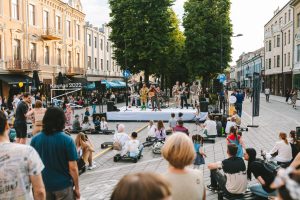
May 21 is the official date of Putvinskio Street Day. Since 2017, once a year, on one Saturday in May, rain or shine or pandemic, all of V. Putvinskio Street comes together to celebrate the neighbourhood and its rich history.
The third event of the main weekend in May is called ‘Celebrate the River’. People will be invited to take part in cultural walks along the Nemunas and Neris and then share in the celebration when these two routes meet at Kaunas Santaka Park, the confluence of the two rivers. This event will allow residents and guests to reengage with the city’s rivers and their banks, learn more about different Kaunas communities and discover the city anew, but this time from the water. Later in Summer 2022, initiative TẽKA will launch a social game aimed at connecting river banks.
Contemporary Vibes in Kaunas District
‘Relationships between cities and their surrounding areas are interesting and complicated throughout Europe, and everywhere they’re influenced by culture. This is why listening to the needs of our region was the first task of Kaunas 2022. Another objective was adapting the programme tools of cultural capital to those needs’, Lukas Alsys, curator of the Kaunas District programme, stresses.
He believes human relationships and coming together play an essential role in the Kaunas District, like nowhere else. This is why these district projects have created unique, one would even say passionate, partnerships. The best example is Italian contemporary circus director Roberto Magro, who is now beloved by communities in the district. He will come back to direct a travelling contemporary circus performance in Batniava eldership at the beginning of the summer, and then will work in Linksmakalnis for an ‘angelic’ show. That’s just one of many reasons to follow the artistic travels beyond city limits.
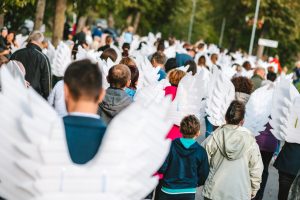
Jeans and Steampunk, Time Travel and Rock Music
The work of the Capital of Culture in the Kaunas District is taking place along several approaches. One of these is a community project called Contemporary Neighbourhoods, involving fifteen local municipal jurisdictions within the Kaunas District. The essence of the project is simple: local jurisdictions called ‘seniūnijos’ (elderships) strengthen communities and address rising challenges through culture.
From June to September 2022, the elderships invite everyone to feel the strong pulse of community and creativity in the Kaunas District and attend the main Contemporary Neighbourhoods events.
Ežerėlis will present a series of photography exhibitions at a newly established community gallery and an alternative reality audio guide created by artist Žygimantas Kudirka. The project launch is scheduled for June.
On June 11, The community of Kulautuva will participate in a theatrical musical performance about the history of the resort town. It will be accompanied by various works of art in different public spaces by the Nemunas River.
The Raudondvaris community and choreographer Marius Pinigis and event director Eglė Valadkevičiūtė invite everyone on a beautiful tour – a journey through time. This event’s primary form of expression will be presented in a theatrical night-time walk on June 17.
Between June 30 and July 3, historic locations in Karmėlava will be presented through the increasingly strong Street Rock Festival, crowned by a combined environmental artwork called Flying Cepelinai, created by artists from Lithuania and Luxembourg: Algimantas Šlapikas and Serge Ecker.
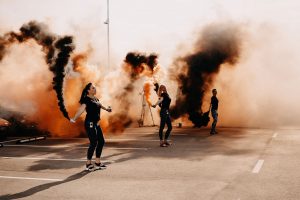
A great time to discover Babtai eldership will be July. The community decided to revive an old trolleybus from the streets of Kaunas. The trolleybus became a creative laboratory for everyone to attend.
Also in July, Vilkija will celebrate Midsummer, and their centrepiece will be a ferry connecting both sides of the Nemunas River. The celebration will include concerts, theatrical performances, and art installations.
In August, the communities from around Garliava will organize a Steampunk Festival, inviting local communities and guests to a magical fiesta. The festival aims to introduce visitors to the Steampunk movement, and its programme will give everyone a chance to plunge into this fantastical world and liberate their imaginations and creativity.
The same month, the neighbourhood of Ringaudai will present their eldership through the Ringaudai Almanac, created by the community and artist Paulina Ružauskaitė. The almanac will be presented along with an interactive sculpture dedicated to this community.
On September 3, the Lapės (literally foxes) town will host the now annual Lapės Sustainability Festival! Did you know that, in 2021, the community created a recreational space from old jeans?!
Linksmakalnis and the charismatic abovementioned Roberto Magro (Italy) have created a show about angels. Nobody knows yet what kind of show this will be. And they can’t possibly know since co-creation means working without a planned script! All we know is that show will be presented in September.
At the heart of the identity of Rokai is the uninterrupted 400-year-old history of its brickyard and the clay found all around the town. In recent years, community members have been introduced to various ceramic techniques and have worked together to create the Clay Road. On September 3, the community will unveil a mythical sculpture and invite guests to a unique show.
With the help of artists Enrika Striogaitė and Remis Ščerbauskas, the harmonious Kačerginė resort town by Nemunas River plans to create a collection of stories inspired by the experiences of its residents. Attend the presentation and a classical music concert on September 4.
Located near the 11th Fort of Kaunas Fortress, Akademija will present a musical production at the military heritage site. Make sure you stop at the sustainable shop Lokali: Made in Akademija, established by the community, for souvenirs. See you on September 10?
The Domeikava eldership has chosen to develop lively activities, roles, and orienteering games. The project Let's Play Domeikava aims to experience and learn more about this Contemporary Neighbourhood. The launch is scheduled for September 17.
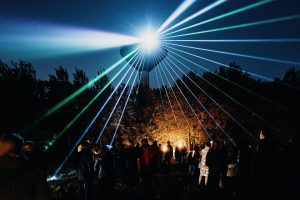
A Culture Boat and A Path of Emerald
Ever searched for emeralds? In the context of Kaunas 2022, emeralds are new art objects that will appear in the most unexpected places. Some of them have been under creation from the start of the programme; others rely on objects in the Kaunas District for their existence, transforming them in a contemporary way. The emeralds will appear in 9 elderships of Kaunas District.
A unique river engineering and landscape design project in Europe, Nemuno7, will serve as a public cultural space and will be officially opened in May. Located in Zapyškis, the dredger dates back to 1965! Instead of dismantling the unused object, a more sustainable solution was devised: to create a new, more relevant role and transform it into a cultural space, inviting the public to explore the subject of water from the perspective of art, history, and science. The Nemuno7 dredger will also have space for artistic residencies.
A tool to discover Vandžiogala, scheduled to launch in Autumn 2022, is a unique diary by Mindaugas Lukošaitis. Using material gathered around the small town of Vandžiogala, the artist added his own drawn stories to the area’s authentic landscape, presenting audiences a very personal code by which they can “read” what he has seen. This project was initiated by Kaunas 2022 programme Memory Office for its CityTelling Festival.
Also organised by the Memory Office, the Lithuanian Klezmer Orchestra’s tour of towns in the Kaunas District will rekindle local communities' memory and culture. Did you know that, before the Second World War, the towns of the Kaunas District were home to significant Jewish communities? The orchestra’s bus will stop in Čekiškė, Vandžiogala, Vilkija, Babtai, Kačerginė, Kulautuva, and Zapyškis. Performances will be accompanied by tours exploring the not so distant past of these towns.
For the European Capital of Culture programme, the 17th Kite Festival in Zapyškis will feature creative workshops, kite and paper aeroplane competitions, a postal postcard service, and soap bubbles. Artists and kite masters will create large and impressive banner kites, and everyone will have a chance to help make the community kite.
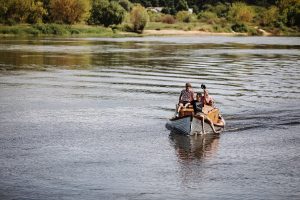
Yet another legendary festival, this time launched by the Kulautuva community, will present a rich musical programme in 2022. Akacijų alėja, an event for sung poetry, will present a series of concerts in four towns along the Nemunas River. Then, the main festival event will take place in Kulautuva. Instead of the usual one-day event, the festival will span through June and July.
Time to revisit the Kaunas Reservoir… and discover its Atlantida-like history. Everyone who comes to the Footsteps at the Bottom of the Lagoon festival on August 27 will get the chance to feel as if they’ve become part of the now flooded villages that once existed here. This event will have a bit of everything: songs, stories, and folklore from flooded villages, contemporary music, and innovative technological solutions.
On the same day and nearby, yet another exciting event to attend will be the Girionys Land Art Festival. The identity of the town lies in its beautiful nature and the expanse of the Kaunas Lagoon. Objects found in nature and ideas shared by residents will all be part of the co-creation process of land art objects.
Skanaus: European cuisines 2022, a food and culture festival, is scheduled for September 7–11 in Garliava. It will include presentations of cultures and the latest gastronomic trends from abroad, cooking lessons by restaurant chefs, culinary film production, family entertainment, concerts by Lithuanian and foreign musical performers, and talks shows, lectures, and all sorts of competitions.
Tadas Ivanauskas, the Lithuanian Zoo and Zoological Museum founder, lived in a villa called Obelynė in Akademija town. In July and August, a series of open-air events will be held to represent the cultural heritage of the Obelynė estate and its recently opened museum, park, and gardens. The main event is planned for September 17.
In August, the residents of Kaunas District and their guests will be invited to attend Mikado, a philosophical exploration of the connection between humans, their tools, and the virtual world. Produced by Šeiko Dance Company, it is choreographed by Vittoria de Ferrari Sapetto (Brazil – Italy – Belgium) and Andrea Valfre (Italy) and will be performed by an international team.
Universal Design Helps Shaping a Sustainable, Accessible, Functional and Aesthetical Contemporary Capital
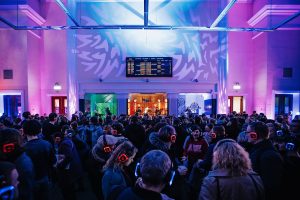
Happiness is an emotion one can project. Now that’s an ambitious statement, right? This is precisely why ‘Designing Happiness’ is one of the key pillars supporting the project of Kaunas – European Capital of Culture 2022.
In 2015, Kaunas became the first city in the region to become the UNESCO City of Design. The title inspires to continue shaping a comfortable contemporary city and educating its residents with the help of quality international examples, news and ideas. Starting with audience development and not forgetting the importance of nature, design as a tool is vital for the success of all programmes of Kaunas 2022. It’s now time to look at ‘Designing Happiness’ itself.
International Day of Happiness
First celebrated in Kaunas three years ago, the Day of Happiness is one of the great success stories of the Kaunas 2022 project. This day became an enormous educational project that taught the people of our city the benefit of attentiveness to others, attention to nuance, and sensitivity to detail. It’s evident the festival will remain in Kaunas even after the conclusion of the European Capital of Culture programme.
The Day of Happiness joins thousands of people in various companies, cultural organisations, housing associations, and school and kindergarten communities. The program explores a new theme every year, and in 2022 Kaunas celebrate the happiness of being part of a community.
The official date of the festivity is March 20; before it, an international congress ‘On Happiness. Presuppositions 2022’ will take place in Kaunas. With the help of science and art, this congress will seek to examine and test the presuppositions of happiness.
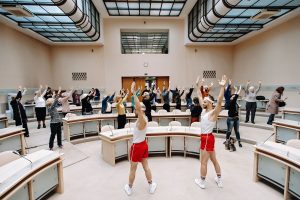
Unlocking Happiness for all
In 2020, an online culture accessibility guide, ‘Kaunas for all’, was published. It is the first publication of its kind dedicated to cultural organisations, objects managers, and event organisers to make cultural objects and events more accessible for all social groups, namely those with special needs.
The guide is free to use for all cultural organisations, event programmers, and curators in Lithuania and other countries; it aims to rethink one’s surroundings and open oneself to new audiences. The guide is accompanied by a signage system suitable for all cultural institutions and helps them broaden their audiences.

2022 as a Year of Culmination
One of the most intriguing ideas under the umbrella of ‘Designing Happiness’ is Nemuno7, a river engineering and landscape design project that is unique in Europe and will serve as a public cultural space.
Nemuno7 will be officially opened on May 22. Located on the bank of river Nemunas near Zapyškis, a town in Kaunas District, the object created on a Czechoslovak construction dredger first put in use in 1965 combines technological history, historical heritage, and contemporary architecture. It is expected to become a new cultural attraction in Kaunas for locals and tourists. It will also have space for artistic residencies. Also, continuing on the subject of sustainability, the site will be home to pioneer plants that grow in open habitats and quickly adapt to extreme cultivation conditions.
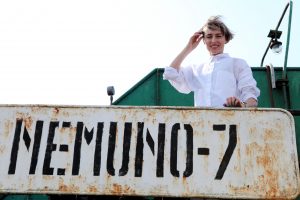
The third Landscape Design Festival Magenta that explores the possibilities of urban nature will reach its peak in 2022. Audiences will be able to view installations, objects, and other works of art created by international teams of artists, architects, and landscape designers from Lithuania, Poland, Chile, Spain, Germany, Serbia, Mexico, the Netherlands, and other countries. These will all be works specially created for an urban context.
The festival’s events will span a broad spectrum, including education programmes, public discussions for city residents; public discussions about business, city government, industry, and society; tours; interdisciplinary projects; events; tactical urbanism; and the creation of public spaces and landscape design sites.
An International Meeting Spot
For 2022, global design organisations, including ICoD (International Council of Design), BEDA (Bureau of European Design Associations), EIDD (Design for All Europe) and UNESCO, have chosen Kaunas, as the European Capital of Culture, as the site to organise their most important annual events. This will be a unique opportunity to present Kaunas on the international stage and feel that a city is about co-creating.
Time to book those tickets – for October, at least. This will be the month when the Assembly of International Design Networks, the Lithuanian national Good Design prize Awards, and the International Kaunas Festival of Design will occur. The latter will be an exclusive series of interdisciplinary events – exhibitions, workshops, meetings, conferences, and installations in the city’s public spaces – that will invite the city’s residents and visitors to learn more about the roots of Kaunas’ authentic design, the creators of contemporary Lithuanian design, design innovations, and progressive practices used by designers abroad.

For the first time, Kaunas will host the unique design innovation programme 5X5®, created by Designregio Kortrijk vzw of Flanders, Belgium. This will be an exceptional opportunity for Kaunas-based companies doing business in different sectors to collaborate for one year with designers based on a patented 12-step programme in the development of new projects and the refining of already existing endeavours, services, or processes. An exhibition held during the Kaunas Design Festival will present the results of a joint Flemish and Lithuanian 5X5® design innovation programme.
The programme is not the only example of a cultural collaboration between Kortrijk and Kaunas, both members of the UNESCO Cities of Design Network. To enhance the friendship, Kortrijk will be sending an enormous letter K, also known as K-Totem, to Kaunas. Decorated with constantly changing visual designs in Kaunas, the K-Totem will be installed in the Lithuanian Constituent Seimas square in the Old Town. The multifunctional sculpture already appreciated by the Belgian crowd will become a space for self-expression by local graphic designers and illustrators. In fact, Flemish artists will decorate the Kaunasian K-Totem, while Lithuanian creators will travel to do that in Kortrijk.
Revisiting History
The traditional Kaunas International Bone China Symposium will present a unique programme for 2022. In October, the modernist Kaunas Post Office will host an exhibition of unique individual and serial ceramic pieces and original designs assembled from the legendary Jiesia ceramics factory in Kaunas.
An exhibition in the shop windows of Laisvės alėja, the main pedestrian boulevard in Kaunas, will help establish an even more intimate relationship with Lithuanian design heritage. Called precisely that, ‘Lithuanian Design: from Temporary to Contemporary’, it will explore different fields of design, including furniture, graphic design, lighting fixtures, and textiles, as well as key historical periods. All year round, from January 22 to October 20!
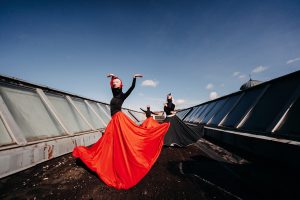
Moreover, an interactive exhibition ‘Kaunas Assorti: Graphic Design (Hi)Stories and Their Actualisation’, an interactive exhibition’ will land in Kaunas Picture Gallery. It will present the history of Lithuanian graphic design in the latter half of the 20th century. Posters, sketches, containers, and brand designs will speak, in their own unique way, about a particular time, identity, and sustainability, echoing issues relevant to the present day.
Next year, Kaunas and Kaunas district will become one big European stage and turn the city into a place where you will not escape culture. More than 40 festivals, 60 exhibitions, 250 performing arts events (of which more than 50 are premieres), and over 250 concerts are planned to take place in 2022. It is going to be the year-long non-stop biggest co-creative festival of all. Come co-create and celebrate with us! https://kaunas2022.eu/programa/
https://dizainaskaune.lt/en/
International Assembly of Design Networks will invite to get to know Kaunas better

In the Australian city of Geelong, at the annual and virtual meeting of the UNESCO Design Cities Network members, the participants unanimously decided to entrust the 2022 yearly congress to Kaunas. The meeting, which creates an exchange, provides excellent opportunities to present Kaunas more widely and meet specialists who will consult Kaunas on social, environmental, cultural, and urban design issues, which will occur precisely after a year.
The Network of Creative Cities seeks to develop transnational partnerships between cities that have chosen creativity as their strategic development factor in creating sustainable and innovative cities. The network brings together the private and public sectors, professionals, communities, and institutions to share experiences, resources, and knowledge with other network members and foster the growth and emergence of local creative industries.
The event in Geelong provided an opportunity for communities from all 40 design cities to participate and learn about the many projects in the network of creative cities. This year's theme was REIMAGINE, RENEW, REGENERATE, inviting design experts to share and talk about projects that have raised cultural, creative, social, and sustainable initiatives and looked at new challenges or opportunities.
During the meeting, Kaunas submitted a proposal to organize next year's annual network meeting in Kaunas. "Although the format of conferences and the organization of international meetings are in many cases beneficial for a small group of people, this annual Congress of Design Cities can become especially important and successful for Kaunas and its guests. We have been in the UNESCO Network of Design Cities since 2015, but the city neither showed initiative nor participated in other projects for a long time. As a result, we are in a network where we are not known, where we are rarely noticed, and where we have not yet shown our potential. Therefore, this annual congress is an excellent opportunity to raise our heads and display our talents and professionalism to the network members, get acquainted with the design sector, and show Lithuania's attractiveness and creativity through Kaunas city and district. Also, Kaunas benefits by gaining experience from highly active cities in the field of design, learning from successful projects implemented in the world, and establishing economic, cultural, and social contacts with potential partners or customers from abroad." said Gediminas Banaitis-Skrandis, project curator of Kaunas 2022.
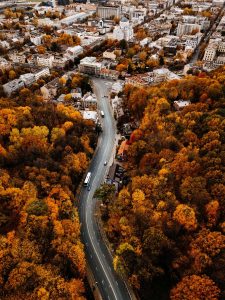
The meeting of the UNESCO Design Cities Network will take place at the same time as the International Assembly of Design Networks "Kaunas - European Capital of Culture 2022", which will also be attended by such global design networks as ICoD (International Council of Design), BEDA (Bureau of European Design Associations ), EIDD (Design for All Europe), will present a comprehensive program and provide an opportunity to learn about the specificities of a multicultural city. "The International Assembly of Design Networks is a unique occasion where the largest organizations in the design sector meet simultaneously in a joint event. This is an opportunity that no member of the invited organizations would want to miss because it will be the first such design Olympics," added G. Banaitis-Skrandis.
During next year's meeting, participants will be involved in Kaunas Design Festival, Lithuanian design exhibition "From Temporary to Contemporary," Landscape Design Festival "MAGENTA," and other projects developed with other partner cities. This is a considerable achievement for Kaunas and its future, which will open wider opportunities, become the beginning of international project ideas and reveal the city through innovative and creative activities.
The Beast of Kaunas: A Myth for Every Day in 2022 and Beyond
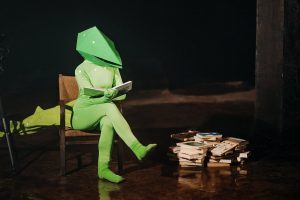
Kaunas Castle, 1st Fort of Kaunas Fortress, railway station and the bookshelves of little Kaunasians are just a few of many unexpected locations in which the Mythical Beast of Kaunas has already appeared since its official debut in 2019.
The main hero of the Contemporary Myth of Kaunas is also the mascot of ‘Kaunas – European Capital of Culture’ and the carrier of the project’s core ideas and values. It also happens to be quite a cute character drawn by illustrator Darius Petreikis. Rytis Zemkauskas, the curator of the Kaunas 2022 programme dedicated to the Mythical Beast of Kaunas, collected and put together all of the stories about the character travelling in the Sunny and Underworld Kaunas. Dozens of people chipped in with myths and legends about Kaunas they had heard – some of the contributors participated in creative writing workshops. At the same time, the rest of them just kept on walking, discovering and getting surprised, just like the co-created mythical character, a true European.
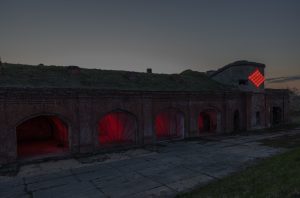
‘First and foremost, this programme is aimed at revealing the magical power of storytelling. Storytelling is an ancient tool that can shape a community, a city, a state. Myths and legends have always helped me to come together and be patriotic. Those coming from Ancient Greece inspired the contemporary European Union. The programme of the Mythical Beast of Kaunas has to offer a novel way of creating myths and legends right here and right now, using them as cultural tools. These are tools carrying values and encouraging empathy, community spirit, respect for each other, and tolerance. Every citizen is welcome to co-create them,’ Rytis Zemkauskas says.
The Mythical Beast of Kaunas was first seen in the Vilnius Book Fair in 2019 – this is where its fairytale book, created by Zemkauskas and Petreikis, was presented. The book is available in Lithuanian and English.
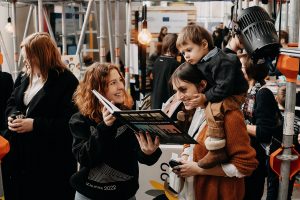
To Chill and Travel
An exciting encounter with the Beast awaits at the Kaunas Castle. With the help of talented composer Paulius Kilbauskas, the mythical creature found its bedroom below one of the oldest towers in Kaunas. His melodic snoring keeps surprising the visitors of the department of Kaunas City Museum and passers-by. Look for loopholes in the walls to ensure the best sound quality!
Yet another talented personality to collaborate with the Beast is Linas Kutavičius. Located in the Kaunas district, the 19th-century 1st fort of Kaunas fortress was brightened with light textures reminding the skin of a mysterious reptile. The new art installation by the light artist is a friendly gesture towards bats, animals that make up a significant population at the fort, and an invitation for people to (re)discover this historical object.
Did we mention that the Beast of Kaunas loves to travel? He made his appearance on a trolleybus as part of a mobile street art gallery some time ago; currently, portraits of his and his friends could be seen on a train wagon in the Kaunas Railway Station. Those approaching the wagon could also hear the tales of the Beast read by Rytis Zemkauskas.
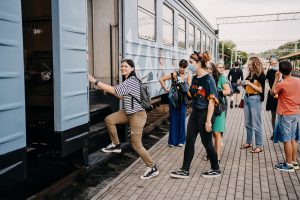
The Main act of Kaunas 2022
Since 1985, when the European Capital of Culture programme was launched, nobody has yet proposed a vision like this – to create a new myth for the city to help it change its path. The Mythical Beast of Kaunas – a project designed to create a unifying narrative for the city – will unfold in next year’s great mythical trilogy comprised of The Confusion (January 19–23), Confluence (May 20–22), and The Contract (November 25–27). The three main events are co-created by artists from Lithuania and abroad; they incorporate the ideas of historical personalities from Kaunas into the new work – as well as hints about the Beast. Will it finally have a physical body? One has to wait until 2022 and see…
Films and Games
The most kaunastic hero of all has already added a cinematic experience to its CV. Aideen Barry, an Irish artist, is working on a stop-motion animation film called ‘Pleats’ with a large team of artists, architecture professionals and modernism enthusiasts in Kaunas. The film, part of the Kaunas 2022 ‘Modernism for the Future’ program, will travel to international film festivals in 2022 – we can’t wait to see the Beast of Kaunas among the actors!
While ‘Pleats’ is still in post-production, one can already touch the Mythical Beast and go down its paths while learning the exciting secrets of Underground Kaunas in the limited-edition strategic board game. Created by a renowned Kaunas-based talent Urtis Šulinskas, the game has already found its place in the homes of many families, even those who have never been in Kaunas. Yet.

Another sweet addition to the Mythical Beast of Kaunas collection is a set of colourful pins created together with Kaunas city tourism, business, and investment development and international marketing agency Kaunas IN. Additionally, petrolheads are welcome to stick beastly magnets on their cars – the souvenirs fit fridges, too.
One can hear through the grapevine that the above mentioned are not the last souvenirs to please the fans of the Beast of Kaunas. Like most of the fantastic things in life, they will come unexpectedly. But here’s some gossip – have you ever wondered, for example, that Kaunas lacks its own perfume? The scent of a city is composed of various aromas, such as freshly baked goods, mamma’s lunch, wet asphalt, tree alleys, even petrol. The perfume of the Beast of Kaunas will be available before 2022.
The Future of the Beast
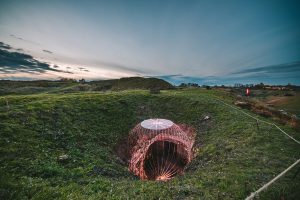
A city game offering a virtual reality experience is currently being developed – everyone will be able to play it online or by downloading a mobile app. The gigantic project will connect the myths and stories of the city and its characters with the essential cultural hotspots in Kaunas and Kaunas district and museum collections. The player will be able to visit historical locations in the area with the Beast as a guide.
Photographer Chiraqas Jindalas (IN / NZ) is working on a photo installation, ‘Underground Kaunas’, set to be opened in Autumn 2022. A unique technology involving negatives, scanning and lightboxes will provide the opportunity to see what’s below everyday Kaunas.
A total of three premieres by Kaunas State Puppet Theatre and Apeironas theatre from Klaipėda will reach the stage in 2022. The experiential and even therapeutical theatrical games will be used as tools to get to know the Beast of Kaunas and analyze its features.
The list of possible appearances of the Mythical Beast of Kaunas has no specific end. The character will add its charm to numerous events planned for 2022.
Next year, Kaunas and Kaunas district will become one big European stage and turn the city to a place where you will not escape culture. More than 40 festivals, 60 exhibitions, 250 performing arts events (of which more than 50 are premieres), and over 250 concerts are planned to take place in 2022. It is going to be the year-long non-stop biggest co-creative festival of all. Come co-create and celebrate with us!
Full programme: https://kaunas2022.eu/en/programme/
Kaunas 2022 memory program will build bridges between different cultures, religions and languages
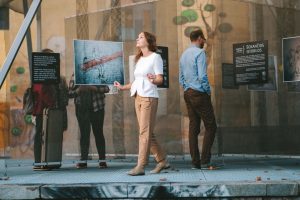
In 2022, the Kaunas 2022 program “Memory Office” will invite the audience to a year-long cultural research of Kaunas DNA. An extremely rich and multi-layered artistic program will lead to a brave confrontation with the city’s complex past like a mirror that helps you get to know yourself and your humanity better.
The program of events, which brings together creators from Lithuania and all over the world, plus a group of partners, will allow locals to get to know their city better, and for the visitors, it will become an atlas of new stories of Kaunas. World-renowned artists William Kentridge, Philip Miller, Jenny Kagan, the Sala-Manca Collective group of artists, and others will help to explore the city. The most important events in the city’s history, which shaped, changed and raised the city from the Second World War, the 1972 “Kaunas Spring” to the myths, stories and legends of the present-day city will be presented through exhibitions, concerts and performances.
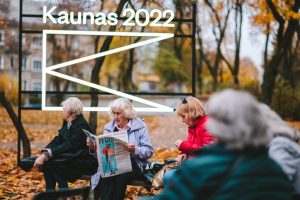
Extensive four months programme of the CityTelling Festival
The bigest event of the “Memory Office” program, the CityTelling Festival, which is already popular with visitors, will take place in 2022 for four months and will talk about the return and the community spirit. In this more than ever conflicted world, we will try to forge a new relationship not only with our painful history, but also with those who live next to us today. Extensive program of the festival includes stories of various forms that build bridges between different cultures, religions and languages. Stories that teach to empathize and listen to the Other.
The international program will invite to exhibitions, performances, concerts of internationally acclaimed artists, new routes created by city history enthusiasts and excursions to explore the different side of the city. The storytellers’ project “Where can I find you?” will spread around the city’s cafés, streets and courtyards, looking for everyone who wants to hear and share the stories of the modern world. Finally, the conference on the idea of Europe will raise one of the most pressing questions of today: what is Europe and what is our place in it?
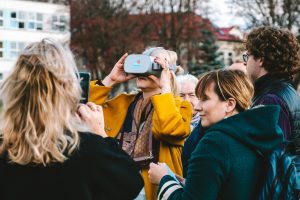
Special attention to the Jewish memory of Kaunas
The Memory Office program and the CityTelling Festival will pay special attention to the Jewish memory of the city. In 2022, the European Capital of Culture will invite Litvaks scattered all over the world to meet at the World Litvak Forum. On 29-30 September, in the program of discussions and culture, famous artists, scientists and representatives of the world of culture will talk about the Litvak identity, memory, and the role of culture in giving meaning to multicultural memory and creating new opportunities for dialogue.
One of the most anticipated events of Kaunas – European Capital of Culture 2022 is the work “Kaunas Cantata: Reconciliation” by composer Philip Miller and artist Jenny Kagan. The largest and most massive musical experience of Kaunas to date, dedicated to the symbolic reconciliation of nations, will be played during the Litvak Forum. More than 400 performers joined this piece of vocal instrumental music: local musicians and singers, choirs, representatives of different genres and generations.
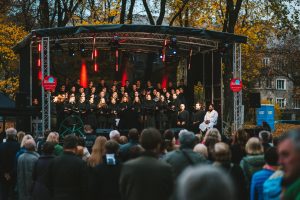
The major events of the four-month CityTelling Festival program are also dedicated to the Jewish theme – exhibitions, performances, musical stories, installations dedicated to the heritage of Jewish memory and cultural signs in the city spaces, and many other activities. Litvak artists who returned to Lithuania from the Republic of South Africa, Great Britain, France and Israel took a particularly active part in the development of the program. Main events: William Kentridge’s exhibition “What We Don’t Remember”, musical performance “Dybbuk”, Jenny Kagan’s exhibition “Out of the Darkness”, photography exhibition “The Last Litvaks”, art installation in public spaces “Threshold” and others.
The book “Kaunas Jews”, which will be released in Lithuanian and English languages this year, is no less important. This is the first such presentation of the Jewish history of Kaunas from the most important facts, concepts and names. This most comprehensive book on the subject to date does not seek to answer all the questions, but starting from the 15th century will consistently remind the contribution of Kaunas Jews to education, medicine, industry, business, culture and other areas of life, and will touch on the painful pages of history.

Events dedicated to the times of the disobedient and a different look at the city and its people
The special program of events will remind of the time that led to the biggest historical turning point in the life of the city. The nineteen-year-old Romas Kalanta who set himself on fire on 14 May 1972 and the events that followed led to the birth of the so-called “Kaunas Spring” – anti-Soviet protests that involved thousands of people and took place mainly in Laisvės alėja (Liberty Avenue). These events left traumatic traces not only in the further development of the city, in its cultural life, but also in the fates of a large number of young Kaunas residents. These historical events and the period of the disobedient will be revived within the Kaunas 2022 program through performances, exhibitions, concerts, discussions, meetings, etc. dedicated to this topic.
The crucial point of this program will be the exhibition “1972: Regime, Youth and Art”, in which paintings, photographs and films, documentary testimonies of musical life, youth fashion and other artefacts will tell about alternative culture and non-Soviet way of life in Soviet Lithuania. The exhibition will reveal the diversity of mindsets and creativity in the Soviet background that levelled everyone. It will explore how aesthetic tastes and ethical attitudes in Soviet times shaped different patterns of life and the atmosphere of disobedience to the government.
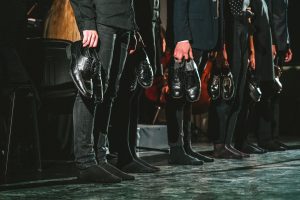
A series of events dedicated to the identity of the city will invite to look at the city and its residents from a different angle. We will examine the city, re-explore the city’s industrial heritage and histories of some factories. Perhaps the most interesting highlight of the program is the conversation between Kaunas and Vilnius about the confrontation between the two cities, the silent struggle and the mute dependence. In the exhibition, which will take place simultaneously in the two cities, MO museum together with Kaunas City Museum will remind how the big cities shaped each other and how modern Lithuania arose from the tensions between them.
Important events: Exhibition “1972: Regime, Youth and Art”, concert ” Made in Kaunas”, Historical-documentary performance “Kalanta”, rock opera “Kalanta”, exhibition “Kaunas – Vilnius: move the mountains”, route “Memory Circle”, exhibition “The Big Industry” and others.
Kaunas walls also tell stories
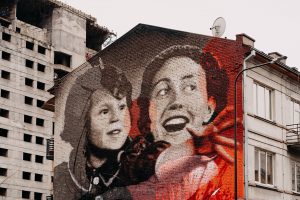
Kaunas and Kaunas district have been adorned with works of street art that bring back the faces of those who lived before us, tell their fates and present culture. This way, the poet Lea Goldberg , the charismatic Rosian with her mother Gerta, and the signs of the Tartar legacy returned to Kaunas again. The number of these meaningful wall drawings is increasing, so when wandering around Kaunas, Kulautuva or Kačerginė, don’t forget to look around and stop to read the inscriptions. Look for the special memory street art route at atmintiesvietos.lt.
And this is only a short look at the Kaunas – European Capital of Culture 2022 program “Memory Office”, which brings back the memory of the city’s ethnic communities.
Next year, Kaunas and Kaunas district will become one big European stage and turn the city to a place where you will not escape culture. More than 40 festivals, 60 exhibitions, 250 performing arts events (of which more than 50 are premieres), and over 250 concerts are planned to take place in 2022. It is going to be the year-long non-stop biggest co-creative festival of all. Come co-create and celebrate with us!
Full programme: https://kaunas2022.eu/en/programme/
Modernism for the Future'. Architecture as Inspiration for Cinema, Dance, Music and Beyond
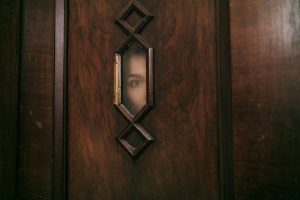
While becoming the European Capital of Culture is the most anticipated event in Kaunas, it's not the only one. The UNESCO World Heritage Commission now has to decide whether the modernist architecture network of Kaunas will be included in the prestigious global list of protected heritage. The acknowledgement would continue the list of international appreciations that already includes the European Heritage Label.
The step to UNESCO is a challenge not only for architecture and urbanism professionals but for every citizen of Kaunas and Kaunas district. This is where 'Modernism for the Future', one of the key programmes of Kaunas 2022, steps in. It aims to awaken the responsibility for our surroundings and create a solid emotional bond with the urban landscape and heritage.
How much modernism does Kaunas have?
During the Interwar Period, Kaunas and Kaunas District have become the epicentre of significant events in Lithuania and Europe. This period has left some 6000 buildings created in the modernist spirit.
These are not only buildings but also locations, ideas, authors, builders, and promoters. Their destinies, too. To have such a condensed heritage enriched by various individual stories and meanings is a great treasure. It is a living testament of history from the period of prosperity and modernisation that changed the everyday habits and coincided with significant changes in European and global cities, urban places and their residencies. Within a short period, modernism has become a dominating style of architecture. However, most of these buildings are in poor condition, forgotten, abandoned, or even empty today. 'Modernism for the Future', together with its extensive list of partners, aims to change this.
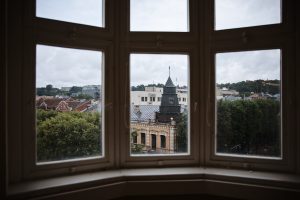
The first steps
'Modernism for the Future' is an open space for initiatives and meetings, welcoming professionals from various fields, building owners, heritage community and representatives of cultural initiatives for discussions, idea workshops, art and culture, which together create the strategy for preservation, interpretation and dissemination of modernist heritage.
Symbolically, the program chose to creatively enable 360 buildings in 365 days next year. The number 360 symbolises all possible perspectives of modernism: cultural, political, economical and more, whereas the number 365 asks us to notice everyday heritage.
The project includes the heritage community gathered on a website, collecting and sharing knowledge about modernist objects, their residents, and events of Kaunas and other Lithuanian and European cities. Dissemination of good practice, creative workshops, educational activities, as well as calls for artistic interpretations of modernism and art projects in modernist spaces are all part of the programme of the project.
The first international 'Modernism for the Future' conference took part in Kaunas in 2018. Two international summer schools have already been organised in the framework of the program. The first one explored downtown Kaunas; the second one took the students to the Kačerginė resort in the Kaunas district. In 2021 and 2022, the school is organised by the Kaunas University of Technology.
A unique movie for international audiences
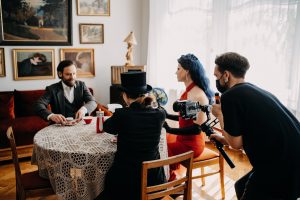
Probably the most unexpected idea of 'Modernism for the Future' is a film that will be premiered in international festivals. 'Pleats/Folds', directed by Irish artist Aideen Barry, tells the story of Kaunas modernism and its value for future generations with the help of stop motion animation. Students, volunteers, residents of modernist buildings, creative writing enthusiasts, dancers and even the Mythical Beast of Kaunas co-created the film.
'A video art project aimed at international audiences was considered already when preparing the bid for Kaunas 2022 – the initial idea was to include the local personalities in the story about the unique architecture of interwar Kaunas,' Viltė Migonytė-Petrulienė, the curator of 'Modernism of the Future', remembers. She explains that inviting Aideen Barry added ambition to the idea – the artist is known for paying a lot of attention to social topics, including local communities. The curator says, 'Pleats/Folds', a creative playground for the Kaunas and Kaunas district residents, is no exception. The filmmaking process included workshops of art as therapy, game and way of learning, while the result is as important as the path. It's a collective message to Europe and the world about the modernist Kaunas of the future, as well as its biggest treasure – the people that love the city.
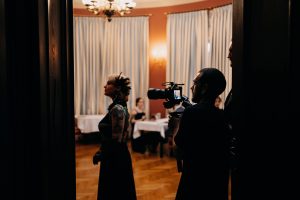
From electronic music to investigating shame
'Modernism for the Future' already has various collaborations with local and foreign partners lined up for 2022.
'MoFu 360/365' is a project financed by the European Union's programme 'Creative Europe 2014–2020' exploring connections with other European cities, from Eastern, Central to Western. Two-year project participants from Kaunas 2022 (Lithuania), Institute of Culture Strategy (Lviv, Ukraine), interdisciplinary arts centre 'Vaizard, z.ú.' (Brno, Czech Republic), regional development associations in the Kortrijk region and inter-governmental heritage organisation 'Intercommunale Leiedal' (Belgium) and partners in Tel Aviv (Israel) invite artists, together with local researchers and the heritage community, to create 17 artistic projects in modernist buildings.
The unique projects will strengthen the narrative of Europe's modernist heritage and will seek to reflect its contemporary significance for the global society. The project's final result will be presented at the opening weekend of the European Capital of Culture 2022 exhibition in the Kaunas Central Post Office. The exhibition will run for four months.
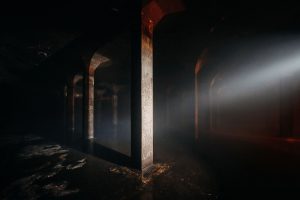
In 2022, the Kaunas territorial division of the historical Lithuanian Artists' Association will be launching the 100 Images of Kaunas project: a series of creative works and curated art exhibits located in 40 public and residential spaces of Kaunas and Kaunas District, built during the Interwar period.
The Reciprocal Residency Programme DeMo (Decoding Modernity) is an exchange programme during which the residents will have the opportunity to analyse the developmental processes of modernity in various social and cultural contexts. DeMo, a three-year programme (2020-2022) of Kaunas Artists' House, together with the Londonderry Center for Contemporary Art, the thankyouforcoming residency program in Nice, the Culture Center LAB in Novi Sad, and other partners invites artists, curators, researchers of the cultural field, and multidisciplinary collectives to explore potential connections, overlaps and divergences between the different forms and expressions of modernity.
The Kaunas division of the Lithuanian Union of Architects will be launching three projects in 2022 to analyse and creatively retell the history of Kaunas architecture during the 20th century. The first project, [In]visible Architecture by Rasa Chmieliauskaitė, aims to engage people with visual impairments in learning about their architectural environments through the use of new tactile tools. The second project, Architecture of Desire by Tautvydas Urbelis, is a continuation of international partnership with the Architecture of Shame project in Matera, Italy, in 2019. There, the artists analysed the expression of shame in local architecture. In Kaunas, the author will be presenting a creative interpretation related to the expressions of desire in spaces of Kaunas City. Additionally, the award-winning architect Gintaras Balčytis and his team will present an exciting program of Kaunas Architecture Festival that will include exhibitions, workshops and a forum.

Good Music Live (Gera Muzika Gyvai in Lithuanian) aims to acquaint the Lithuanian audience with world music – a genre of music that embraces both modernity and traditionality by merging deeply-rooted traditions with the feelings and experiences of a modern person. In 2022, Good Music Live will be presenting the music programme World Music for Kaunas – a series of events in modernist buildings of Kaunas and Kaunas District, with concerts taking place all year round in apartments, public facilities and spaces built during the Interwar period.
Digital Tsunami, a platform for underground music, is organising a festival called Optimismo. It will celebrate modern electronic music and architecture, employing contemporary experimental music to reveal the relevance and value of modernist heritage and architecture in Kaunas. In 2022, Digital Tsunami will enrich the city's numerous spaces with a symbiosis of music and contemporary technological solutions.
Kaunas Dance Theatre AURA is the very first theatre of modern dance in Lithuania. Its project Pulsating Modernism of Kaunas by AURA includes a series of interactive guided excursions accompanied by live performances. Set to be initiated in 2022, the programme will provide the opportunity to get to know the modernism of Kaunas from a different point of view.
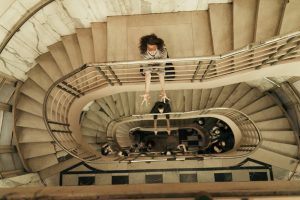
Kaunas Photography Gallery is currently organising a programme of residencies Photography – A Document for the Future, which will provide the opportunity to analyse and represent the modernism of Kaunas in an international context. The project will be welcoming residents from Germany, Scotland, the Netherlands and more to present their interpretations of Kaunas modernism.
The National M. K. Čiurlionis Museum of Art, known as the crown jewel of Kaunas modernism, also has several departments in other historical buildings of Kaunas, namely houses and apartments of interwar celebrities. The A. and P. Galaunė House-museum has already opened an exhibition, 'Arno Funk[tionalism]', dedicated to one of the busiest architects of the golden era of Kaunas.
'Modernism for the Future' is just one of many programmes of Kaunas 2022 that help Kaunas and Kaunas district to become a contemporary capital and one big European stage. In 2022, it will be a city where you cannot escape culture.
Full programme: https://kaunas2022.eu/en/programme/
Robert Wilson: ‘No one can do what I did, and I don't want anyone to try to do it’
In September 2022, the premiere of Dorian, based on the work and life of Oscar Wilde and the biography of Francis Bacon, is scheduled in National Kaunas Drama Theatre as part of the Kaunas 2022 program. Directed by Robert Wilson, the play was intended for one actor, but while talking to the American artist right after the casting in Kaunas, the statement became yet another question. One thing is for sure – even though Wilson states he’s ‘always writing the same novel,’ after 55 years in the theatre world, he’s still full of surprises.
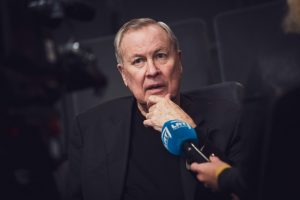
I feel that the theater people in Kaunas are pretty intimidated by you. They respect you and are afraid of you. How do you feel about that?
I’m afraid of myself. [laughs]
I don’t know. I think I’ve always been out of step and a bit different.
I think that today was very strange for these actors to go through what we just went through. It’s my way of going about it. I never really know exactly what I’m going to do. I guess I would not be working in the theater if I had studied theater or wanted to do it.
When I first saw theater – I came from Texas, and I had never been to the theater – I strongly disliked it. I didn’t like actors. I didn’t like all that acting. It was so unnecessary, complicated and I didn’t want to be in front of actors trying to express themselves and impose their emotions on me. I’d rather go and be alone in a room. I went to the opera, and I disliked that even more. I’d rather again go to my room and close the door and listen to a recording not to see some singer overacting in front of me. The costumes were ridiculous. The set was ridiculous, and I would rather close my eyes. [laughs]
I guess I made theater because I strongly disliked everything that I was seeing. I didn’t plan on a career in the theater. It happened by accident. I wrote a play with a black deaf boy that had never been to school and knew no words. It was seven hours long and silent. I showed part of it in New York. People said that I couldn’t show seven hours. It was too long: ‘People are not going to understand. They are not going to sit seven hours for something that is silent.’
I went to France and was going to do two performances. Pierre Cardin invited me to show it in the theater. We played Deafman Glance for five and a half months to 2,200 people every night. Charlie Chaplin came to see it twice. My career was established. I didn’t know anything about theatre. I didn’t even like it. I was asked to go to La Scala, I was asked to go to the Berlin Opera... I always thought, ‘Well, I’m going to do another production to pay the rent,’ because I really wanted to be a painter. I was not a very good painter. [laughs] For 55 years, I have been working in theater.
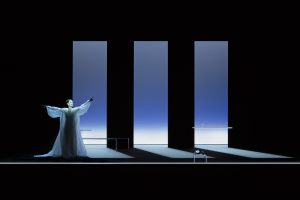
Did you see what you were looking for here in Kaunas?
Well, no, but I would stay very open-minded. I’m doing this play in Germany and the actor there is totally, totally, totally different from these actors. He’s unique.
I wrote Hamlet: A Monologue in 1975 and performed it myself in Paris in 1977. It’s now being performed by somebody else in Paris. The first thing I said to the actor doing my role, I said, ‘You’ll never be able to do what I did.’ No one can do what I did, and I don’t want anyone to try to do it. He’s very short, and I was very tall and skinny at the time. He’s a different body type and a completely different actor. One reason I chose him because I knew he was could never be anything like myself. The movements are the same. The light is the same. The stage set is the same, but he is an entirely different person. In Kaunas, we knew from the beginning that we look for somebody different. We don’t fall back and try to mold production around what the German actors are doing.
It means that there will be two very different performances in the end.
They will because the people are different. I’ve from time to time have gone back and revived productions. I made an opera with Philip Glass called Einstein on the Beach. We did it in 1976, and we did the last revival a few years ago. Although everything is the same in terms of movement, stage set, lighting, music but the people are different, so the story is different. The play is different because the people are different.
A play for one performer means a lot of pressure on that single person.
Even tonight, I was talking about doing it with two. I don’t know. I’m still open.
Two are still less than 10 or 15. It’s lots of pressure but at the same time lots of artistic freedom. Is that right?
Well, the difficulty, if you’re alone on stage, is that you don’t have a partner. Your partner is the public should always be the public. Anyway, a few years ago, I did a Mary Queen of Scotts with Isabelle Huppert, the French actress. It was first supposed to be done with Nicole Kidman. Then it was Meryl Streep, and there were four or five actors, including Cate Blanchett. They each backed out because they said, ‘I need a partner on stage, and it’s a monologue for one person,’ but Isabelle had no problem. S
You mentioned people like Philip Glass; you’ve also worked with Lou Reed and Lady Gaga. What do you learn from artists outside the immediate theatrical circle?
Well, Gaga is remarkable. Her talent is so enormous. She’s a classical pianist. She plays Mozart. I made 20-something different video portraits of her. For one of them, she stood for 11 hours without moving. 11 hours and she’s a popstar. How do you stand there and be interesting for 11 hours without moving? She speaks the text of Marquis de Sade, which I did based on paintings from the Louvre Museum. It’s amazing. She speaks like a classical actress. She can bite and speak words. She’s about as professional as you can get. She’s a hard worker. She does her homework. She’s highly intelligent.
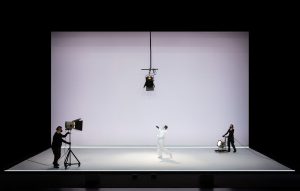
Have you always been a hard worker?
Yes. I’m a slow learner. I was always the worst one in school, the last of my class, but I had to work harder than most other kids. I had a roommate when I was at the University of Texas. He was first in his class, and I was just barely passing. I had to work all the time and do homework. He just breezed through the University of Texas. It was much more difficult for me. As I learned Hamlet, it took me four and a half years. I had to go to bed every night studying. I had to wake up in the morning and study. I had to do it in the shower, walking down the street, on the bus, or wherever. But once I do learn something, the thing just sticks.
For how long did you carry the idea of Dorian in your head?
Well, it’s been three or four years. I started with the idea that two was one. Even though it was a monologue, it was always about two characters as one. You have two hands, the left hand, and the right hand, but it’s one body. The left side of the brain and the right side of the brain, but it’s one mind. We think one plus one is two, but actually, two can be one. Heaven and hell are one world, not two.
You first worked with the writer Darryl Pinckney more than three decades ago, and there has been a handful of successful collaborations ever since. Was he an obvious choice for Dorian as well?
One thing I’ve always found so boring in theater is that it’s like ping pong. ‘Hello, how are you? What’s your name? You have beautiful blonde hair.’ ‘My name is Bob.’ ‘What did you do last night?’ ‘I drank a lot of vodka.’ ‘Are you hungover today?’ I hate that in the theatre. Darryl just writes a body of words so that you don’t have a ping pong situation. He’s a very elegant man with language and words. I wonder how it’s going to be translated here. Anyway, we won’t have a ping pong situation, even if I put two people on stage now, which I’m considering, but it would not be ‘Hello, how are you?’ ‘I’m okay.’
Who decided or had the idea to incorporate the biography of Francis Bacon into the story?
It was more Darryl. We started listening to Peggy Lee singing The Alley Cat Song. Peggy Lee is very cool and hot at the same time. Irony. So, I was thinking about an alley cat. That was really how we started Dorian. Then, by accident, we found this parallel between Francis Bacon. This guy broke into his studio in London, and instead of calling the police, Bacon painted his portrait, and they became lovers. It was, in some ways, a very odd, strange parallel with Oscar Wilde.
Is Dorian going to be the classical work by Wilson?
Marcel Proust said, ‘I’m always writing the same novel.’ They asked Albert Einstein once he said, "Mr. Einstein, can you repeat what you just said?" He said, "No, there’s no reason for me to repeat what I just said because it’s all the same thought."
I wake up, and that’s what I do. It’s not like I can go to an office, work, and then I go home and watch TV and scratch the dog, and I think my work is a way of living. It’s life. I never think about it being work. It’s just what I do.
Next year, Kaunas and Kaunas district will become one big European stage and turn the city to a place where you will not escape culture. More than 40 festivals, 60 exhibitions, 250 performing arts events (of which more than 50 are premieres), and over 250 concerts are planned to take place in 2022. It is going to be the year-long non-stop biggest co-creative festival of all. Come co-create and celebrate with us!
Full programme: https://kaunas2022.eu/en/programme/
[embedyt] https://www.youtube.com/watch?v=MYyrTPiAczo[/embedyt]
European Capital of Culture Forum in Kaunas: Reflecting on Five Years of Creative Adventures, Lessons and Achievements
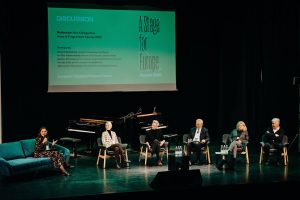
Next year’s European Capital of Culture (ECoC), Kaunas, has already caught the continent’s attention. On September 22–24, the team revealed a comprehensive programme for 2022 – the press conference was followed by a two-day forum full of captivating presentations, in-depth debates and artistic interventions. All of that helped to reveal the core ideas and values of the project and suggested 2022 will be one of the most successful years in the city’s history. An introduction to a new creative era, too. Once a temporary capital of a new state, today, Kaunas is ready to become a contemporary European capital.
‘I feel like five years ago when our team met the ECoC jury at the Ministry of Culture in Vilnius – we then promised the jury culture can make the much-needed change in people’s mindsets and help them better understand each other, as well as heal the city from its historical amnesia,’ Virginija Vitkienė, CEO of Kaunas 2022, reflected when opening the press conference ahead of the ECOC forum.
Partnerships that Enhance the Value of the City
‘Three years ago, we started the forum as an occasion and space to learn and get inspired from other cities, organisations, and innovators creating novelties in the cultural sphere. This year, it seemed more than natural after a few years of talking globally, we focus on Kaunas and speak in-depth about its programme’, Ana Kočegarova, Head of Programme at Kaunas 2022, opened the panel about the culture partnership programme. Kaunas 2022 accumulated around 80 partners that each helped shape the unique programme for next year.
‘An ECoC without helping hands is not ECoC’, Ana Kočegarova smiled. Among other partners that joined her on the stage was Gintarė Masteikaitė, culture manager, producer and head of ConTempo, the international performing arts festival making heads turn in Kaunas and Kaunas district since 2019. The culture professional believes ‘One of the key events initiated by Kaunas 2022 reveals the potential of performing arts and what we can do together; also, it supports independent artists who live here, or who left city and country and are now coming back. In general, art is a great tool to bring the world to Kaunas and Kaunas to the world.’
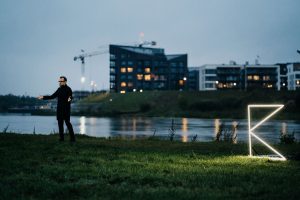
Memory Topics Crossing State Borders
Memory Office, one of the founding branches of Kaunas 2022, kicked off its session with guided tours in two of the most multi-layered areas of Kaunas, history-wise. During the walks, the programme’s curators presented the site-specific artworks initiated by the Memory Office that all prove the language of art as a way to tell the stories of people is a tool much more potent than pure facts.
Next year, the Memory Office will present a comprehensive programme in three parts, starting in spring, to commemorate the 50th anniversary of the unrest in Kaunas that followed the self-immolation of a 19-year-old student Romas Kalanta in protest against the Soviet regime. The events of 1972 will be reviewed in two theatre performances. Later on, the fourth CityTelling festival will grow into a month-long event. In autumn, World Litvak Forum will gather many people who have their roots in Lithuania to discuss the painful past and a shared future.
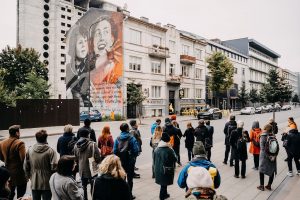
Architecture Heritage as Catalyst
Modernism for the Future is one of the most ambitious branches of Kaunas 2022, aiming at opening 360 interwar modernist architecture buildings in Kaunas and Kaunas district for visitors, ideas and events. The goal coincides with the architectural networks path to the UNESCO World Heritage List. Coincidentally or not, representatives of UNESCO attended the ECoC forum session held at the modernist auditorium of National M. K. Čiurlionis Museum of Art.
Within the framework of the Modernism for the Future programme, for more than five years and in various ways, cultural organisations, initiatives, architectural historians, and interdisciplinary art creators have been seeking inspiration in the city signs witnessing the birth of modern society, to tell Lithuania, Europe and the World. During the session, the programme’s partners revealed how Kaunas modernism can be Open and Accessible, Inclusive and Inspiring, Raising Awareness and Love to everyone for their future city.
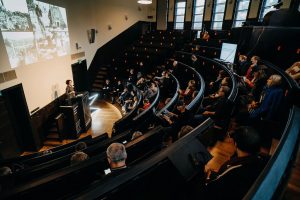
Understanding Oneself and the World Through a Myth
Possibly the most exciting session of the ECoC forum in Kaunas was held in the confluence of Lithuania’s main rivers, Nemunas and Neris, which is often called the birthplace of the city. Rytis Zemkauskas, the curator of the Myth of Kaunas, stressed we are what we tell and invited everyone to control the chaos by telling a common story: ‘Narrative places a human being within the time-space. Narrative helps to deal with the fear of infinity, it establishes, comforts and protects; The European capital of culture is aimed to create a uniting network of many different narratives – The Great Myth’. So, will creating a new myth for the city help it change its path? The answer will unfold in next year’s great mythical trilogy comprised of the Uprising (January 22), Confluence (May 20), and Treaty (November 25–27).
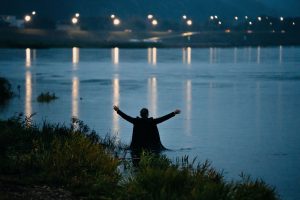
All as one Before and After
From traditional music sounds and crafts that spread over the terrace of Kaunas Cultural Centre during one of the last sessions of the ECoC forum to brave examples of contemporary art – all of the above is nurtured in the playground of the Kaunas 2022 community programme. Spanning through the numerous neighbourhoods of Kaunasand Kaunas district, the programme aims at revealing the multi-layered face of the region, combined from varied yet all significant features, legends, beliefs and wishes.
Celebrating the spirit of communion and co-creation are two of the key goals of Kaunas 2022. During the past five years, the activities brought impressive results: 1,300 cultural and artistic activities were organised, more than 18,000 participants took part, and more than 55,000 viewers enjoyed the content. More than 350 foreign and Lithuanian artists contributed to implementing the activities, and more than 70 long-term works of art were created. ‘The greatest outcome of value is a community that is curious and initiates changes in its living environment’, believe the programme’s curators. During the session, emotional stories about personal journeys were shared. Everyone was invited to set off on a journey through the co-created wonders of Kaunas and Kaunas district next year.
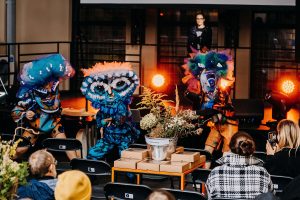
Design’s Role in Creating a Happy City
From audience development to a greener city, design as a tool is critical in every single aspect of Kaunas 2022. Design for Happiness, a programme striving for an accessible, happy and sustainable city, has been incorporated in the main idea since Kaunas started getting ready to become an ECoC. ‘It was clear ever since we started preparing the bid that we want Kaunas to be not only a city of modernist architecture but also a city of contemporary design,’ said Virginija Vitkienė, CEO of Kaunas 2022, when opening the session on Friday morning.
Together with partners, Virginija Vitkienė presented a lush tree of activities of Design for Happiness for those attending the event and watching the broadcast. The tools include a new accessibility guide for cultural institutions looking for new audiences, an old industrial ship in river Nemunas currently converted to an art hub, a successful collaboration with Kaunas’ fellow city in the UNESCO Creative Cities network, Kortrijk in Belgium, an overwhelmingly inspiring landscape design festival, the International Happiness Day and upcycling as a tool for creating sustainable fashion.
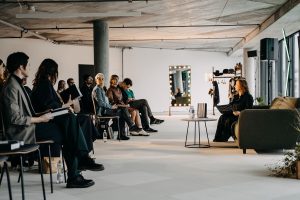
Emerging Kaunas: Goals for Years Following 2022
It would be very incorrect to say only professional artists and culture operators helped shape Kaunas 2022. The young generation of Kaunasians has been included in the path since the very start, with the help of the Emerging Kaunas programme, offering creative mentorships and workshops for high school students. The changes in the mindsets of the next generation were creatively and at the same time carefully transformed into the events of the programme of Kaunas 2022, highlights of which were revealed in the final session of the ECoC forum. Started with the rhythms of trap music, the event included personal growth stories, alternative initiatives and big future plans.
Next year, Emerging Kaunas will host the largest contemporary city festival "Audra” (Storm), based on the principles of co-creation and coined in cooperation with dozens of young producers, curators and the music club Lizdas. What happens next? The people Rising Kaunas will definitely come back in 2023 and the years to come.
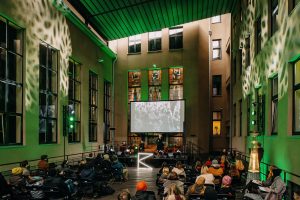
Hundreds of participants from across Europe attended the forum events, including representatives of former and future ECoCs, various institutions of art and culture and the press. Thousands of viewers watched the broadcast online – both real and virtual reactions became a true inspiration for the team of Kaunas 2022’. Video recordings of the presentations and the press conference are all available online on YouTube and Facebook.
Lithuania’s second-largest city Kaunas and the surrounding Kaunas district are ready to become one big European stage next year. The programme of Kaunas 2022 includes at least 40 festivals, over 60 exhibitions, more than 250 stage events (50+ world premieres!), and a number of concerts exceeding 250. The grand opening of ECoC is scheduled for January 22, 2022.
Text by: Kotryna Lingienė
Photos by: M. Plepys
All Eyes on Kaunas: Lithuanian City Revealed the European Capital of Culture 2022 Programme
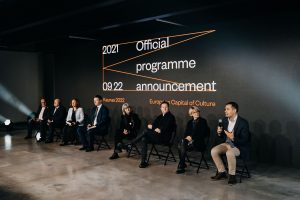
After twelve years of anticipation, the official title of European Capital of Culture is back in Lithuania. The country’s second-largest city Kaunas and the surrounding Kaunas district are ready to become one big European stage next year – the grand opening is scheduled for January 22, 2022.
The immersive formula for the big year includes at least 40 festivals, over 60 exhibitions, more than 250 stage events (50+ world premieres!), and a number of concerts exceeding 250. A press conference revealed key events, the most important names and many more exciting details for the whole continent to follow. Held in Kaunas, the event was accompanied by teams of Esch in Luxembourg and Novi Sad (Serbia), the other two European Capitals of Culture ready to shine in 2022.
Culture Beyond City Limits
It has been five years since the city of Kaunas and the surrounding Kaunas district have started preparing for 2022. The truth is, the ambitious international project has already proven its success. The change has taken place, and the communities that make up the face, body and soul of Kaunas have activated. Much of the European Capital of Culture program aims to celebrate the awakening and write a new chapter of the history of the area.
Dozens of unique small towns surrounding Kaunas, as well as lush nature and rich traditions that go back hundreds of years, are what complement the urban network within the city limits. At the same time, the international title has helped the rural communities meet international artists and discover new ways to express their identity.
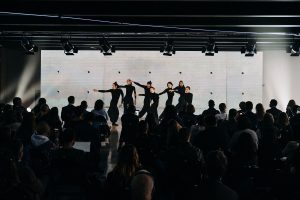
A Community Project Above Everything Else
The theme of Kaunas 2022 is a grand yet unified dama that gives meaning to the road to the awakening of the city and its people. It’s the biggest co-creation festival of all since day one – the majority of the time, ideas and finances is dedicated to bringing as many people closer to culture as possible. It’s also an educational project, as hundreds of culture professionals and enthusiasts and representatives of the young generation have already gained new skills, guaranteeing the project’s continuity and quality future for Kaunas and Kaunas District.
What also makes Kaunas 2022 unique is creating a new myth for the city to help it change its path. The Mythical Beast of Kaunas – a project designed to create a unifying narrative for the city – will unfold in next year’s great mythical trilogy comprised of the Uprising (January 22), Confluence (May 20), and Treaty (November 25–27).
The three main events are co-created by artists from Lithuania and abroad; they incorporate the ideas of historical personalities from Kaunas into the new work – names like George Maciunas and Emmanuel Levinas. Among the programme participants are Philip Miller, William Kentridge, Marina Abramović, Yoko Ono, Jenny Kagan, Robert Wilson, Mirga Gražinytė-Tyla, Antony Polonsky, Modestas Pitrėnas, Edgaras Montvidas and many others. It’s important to stress each branch of Kaunas 2022 has its own superstars, some of whom are still on their way to international fame – Kaunas and Kaunas District, as one big European stage, will become their trampoline.
Highlights of the Programme
Annual festivals already launched by Kaunas 2022 will reach their culmination, such as the International Day of Happiness (March), the European Capital of Culture Forum (May), Contemporary Neighbourhoods (all summer long in the towns of Kaunas district), the European Youth Festival (July), the international performing arts festival ConTempo (August), Fluxus Festival (September), landscape design festival Magenta (autumn), the CityTelling Festival, which reconsiders the multiethnic memory of Kaunas and the people who built it every October, and the Kaunas Design Event in celebration of its title as a UNESCO Creative City of Design (October). Talking about UNESCO, the Kaunas 2022 program called Modernism for the Future invites the residents and guests of the city to embrace the rich modernist architecture network and support its path to the World Heritage List.
Among the highlights of the event schedule in 2022 are the international exhibition of up-and-coming contemporary artists “MagiC Carpets Landed”, the 13th Kaunas Biennial “Once Upon Another Time”, an exhibition by William Kentridge, one of the most influential and most wanted international artists of today, a retrospective by the cult figure of New York art scene Yoko Ono, a show by the global superstar Marina Abramović, as well as works and performances by other fantastic names, often cooperating with each other and local artists or communities. New and very much anticipated events such as World Litvak Forum are also confirmed for 2022.
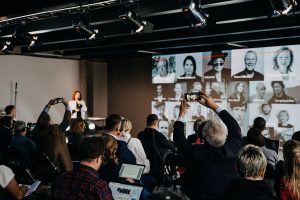
Cultural Bridges to the World
Artistic interventions, including two premieres, spiced up the mood of the press conference. Kaunas dance theatre ‘Aura’ presented an excerpt of ‘Pluto’, a new show depicting a journey through one’s identity by Matthew Dane Livingston.
Another premiere that received much attention was a new song ‘City Sisters’ by Lithuanian singer and Kaunas 2022 ambassador Jurga Šeduikytė and South African songwriter Kgomotso Le Roux. ‘City Sisters’ tells a story about two women in two countries – and Le Roux is singing her part in the Zulu language.
The cultural bridges built by the project of Kaunas 2022 helped even more creative ideas connecting Lithuania and SA to be born. The list includes an exhibition by William Kentridge, one of the most prominent contemporary artists whose roots are in Lithuania, coming to Kaunas next year. The South African artist explores the topics of violence, empathy and racism in his works – similar themes are reflected in the song ’City Sisters’, which will become a soundtrack to the exhibition. The premiere of the song’s music video will be held in both Kaunas and Johannesburg.
European Capital of Culture Forum for Extended Talks
The press conference in Kaunas is followed by the European Capital of Culture forum on September 23–24. Both live and online, the fourth international forum is dedicated to in-depth discussions and evaluation of the programme for next year. Curators and partners of the six main branches of Kaunas 2022 will present the vision for the city and the results of their five-year work, including the most significant achievements and the most important lessons that all influenced the final programme. Of course, it will be time to talk more about the key events in next year’s calendar.
The timetable of the forum: https://forumas.kaunas2022.eu/
Watch it live: https://www.youtube.com/c/Kaunas2022, https://forumas.kaunas2022.eu/ ir https://www.facebook.com/kaunas2022.
https://kaunas2022.eu/
An Unexpected Twist of Events: Kaunas Airport Renamed to Fluxus Airport
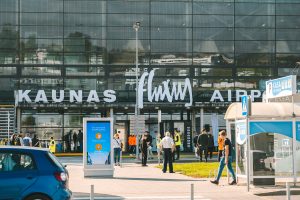
Did you know the international Fluxus movement, emphasising the artistic process over the result, is rooted in Kaunas, Lithuania? To celebrate the legacy of George Maciunas, the founder of the international community that includes artists like Yoko Ono, his hometown Kaunas has renamed its international airport to Fluxus Airport.
Starting September 10, 2021, passengers will arrive and depart the world’s only air gates of art until the end of 2022, the year of the European Capital of Culture in Kaunas.
Virginija Vitkienė, CEO of Kaunas 2022, believes it’s essential to remember Fluxus is the sign of creativity, playfulness, unconventional approach and art without rules or borders: “Kaunas airport agreeing with our offer clearly shows how inclusive, stimulating and attractive the key ideas of the Kaunas – European Capital of Culture 2022 are.”
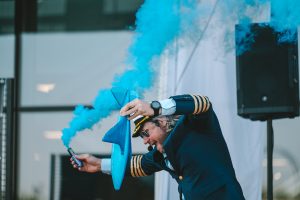
George Maciunas, the founder of Fluxus, was born on November 8, 1931, when Kaunas was the flourishing temporary capital of Lithuania. The period of the First Republic is now a source of inspiration for contemporary Kaunas. Thus, as a UNESCO City of Design, member of the UNESCO Creative Cities network and the European Capital of Culture 2022, Kaunas is inseparable from Fluxus and the legacy of George Maciunas.
For decades, the Fluxus Cabinet, filled with art and statements from around the world, has been open in the Kaunas Picture Gallery. A stone’s throw from it, at the intersection of three streets, there’s a unique George Maciunas square. The latter is the starting point of the annual Fluxus Festival’s main event, a massive and creative climb up the hill. The festival, together with the Fluxus Labs project focused on community art, is part of the program of Kaunas 2022.
As 2022 is around the corner, Kaunas and Kaunas district are becoming one big European stage: they will host more than 40 festivals, a comprehensive year-long exhibition programme, more than 250 performing arts events, including 50 premieres and a rich musical programme with approximately 250 concerts. The complete programme for 2022 will be revealed on September 22, 2021, during a press conference that will precede the European Capital of Culture forum.
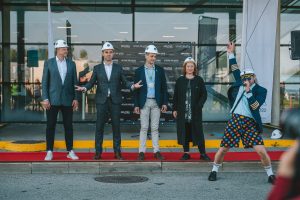
Photos by: A. Aleksandravičius


